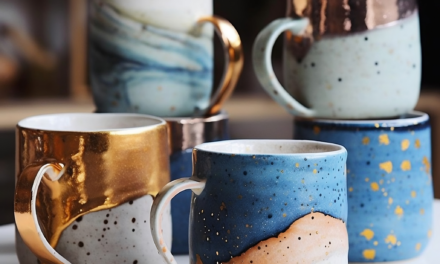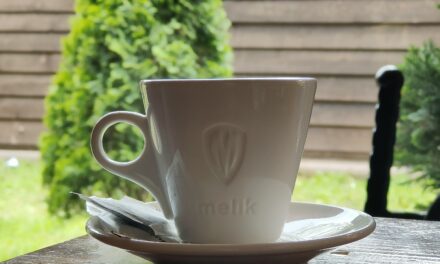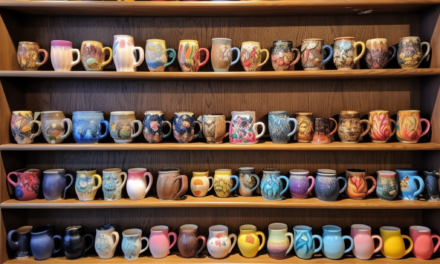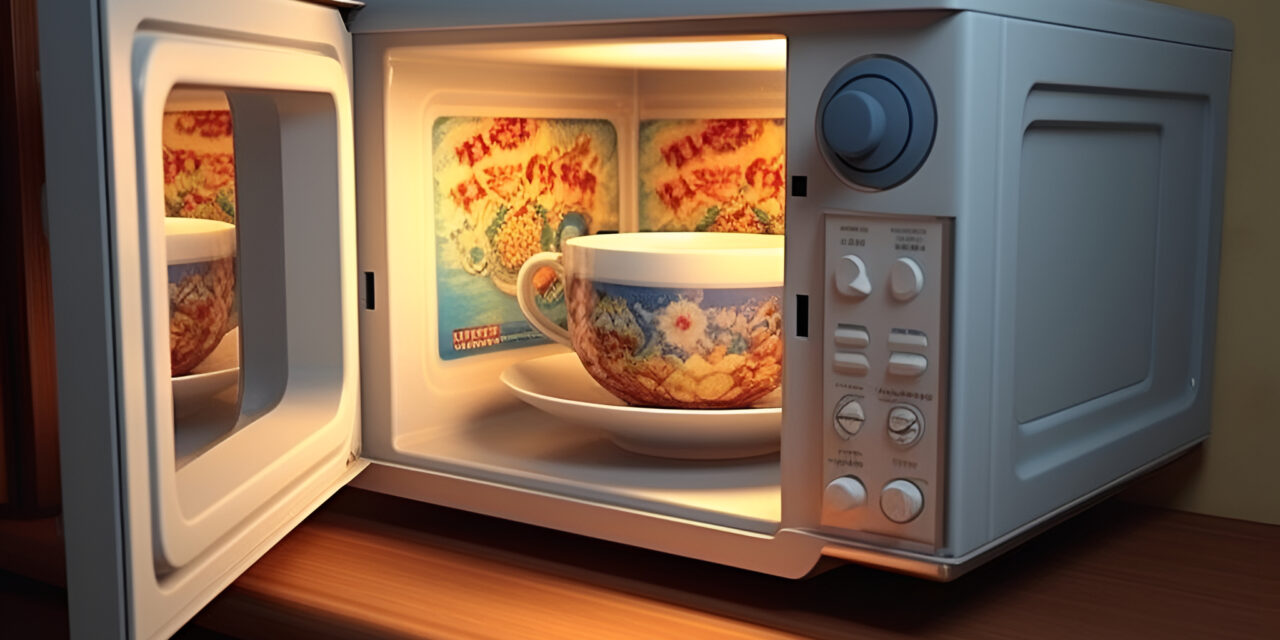As an Amazon Associate, we earn from qualifying purchases. We may also earn commissions if you purchase products from other retailers after clicking on a link from our site.
As a coffee enthusiast and avid collector of quirky mugs, I’ve often pondered whether my beloved ceramic coffee mugs are safe to use in the oven. Imagine this: a lazy Sunday morning, freshly brewed coffee fills the air, and you’re struck with the idea of baking a muffin in that same mug. But can your favorite mug handle the heat?
Ceramic coffee mugs can be oven safe. Some ceramic mugs are designed to withstand high oven temperatures, while others are not and will shatter or crack easily. To determine if a mug is oven-safe, check for explicit indications from the manufacturer, such as labels or markings on the mug or its packaging.
Look for terms like “oven safe” or specific temperature ranges. If there are no clear indications, it’s best to assume the mug is unsuitable for oven use.
Join me on a journey as we explore the world of oven safety for ceramic coffee mugs, unraveling the mystery of their suitability for baking adventures.
Can Ceramic Coffee Mugs Go in the Oven?
Whether ceramic coffee mugs are oven-safe is important as it relates to both the functionality and longevity of these beloved vessels. When it comes to ceramic mugs, there is a wide range of variations in terms of their composition and manufacturing processes. These differences directly influence their ability to withstand the heat of an oven.
Ceramic mugs specifically designed to be oven-safe undergo a special production process involving materials and glazes capable of withstanding high temperatures. These ceramic mugs are typically made from high-quality stoneware or porcelain (yes, these are types of ceramic), known for their durability and resistance to thermal shock.
Check out this YouTube video to see how ceramic mugs are glazed:
Additionally, they are often coated with a food-safe glaze that adds an extra layer of protection and prevents any chemical reactions when exposed to heat.
On the other hand, there are ceramic mugs unsuitable for oven use. These mugs may be made from lower-quality materials or lack the necessary glazing to withstand the heat.
Using such mugs in the oven can lead to various issues, including cracking, discoloration, or even breakage. To avoid any mishaps, it’s crucial to carefully examine the markings or instructions provided by the manufacturer to determine the oven safety of your specific mug.
When checking for oven safety indications, you may come across labels or symbols explicitly stating whether the mug is safe. These markings can typically be found on the bottom of the mug or on its packaging. Look for terms like “oven safe,” “heat-resistant,” or any specific temperature ranges mentioned. Some manufacturers may also provide additional information regarding the maximum temperature the mug can withstand.
In my personal experience, I’ve come across various ceramic mugs with different oven safety specifications. For instance, I have a Milka ceramic mug that explicitly states it is oven-safe up to 375 °F (190 °C).
The mug features a symbol of an oven with a temperature gauge, indicating its suitability for baking purposes. On the other hand, I own a delicate vintage ceramic mug that lacks any oven safety indications. As a result, I always avoid subjecting it to high temperatures to ensure its longevity.
To further complicate matters, it’s important to consider the impact of sudden temperature changes on ceramic mugs. Ceramic materials are susceptible to thermal shock, which occurs when there is a rapid expansion or contraction of the material due to extreme temperature variations.
This can cause the mug to crack or shatter. Therefore, allowing the mug to adjust gradually to temperature changes is essential. Avoid placing a cold mug directly into a preheated oven or transferring a hot mug into cold water immediately after baking.
And if you’re wondering whether your ceramic cup is microwave-safe, check out Can You Microwave Ceramic Coffee Cups?
How Do You Know if a Mug Is Oven Safe?
Determining whether a ceramic mug is oven-safe requires careful attention to specific indicators provided by the manufacturer. Here are some key factors to consider when assessing the oven safety of a mug:
Manufacturer’s Instructions
The first step is to review any accompanying documentation or packaging that came with the mug. The manufacturer often includes explicit instructions regarding the mug’s oven compatibility.
Look for phrases such as “oven safe” or “suitable for baking.”
Markings or Labels
Many ceramic mugs intended for oven use feature clear markings or labels. These can typically be found on the bottom of the mug or imprinted on the surface.
Look for symbols like an oven or flame icon, often indicating the mug’s suitability for heat exposure.
Temperature Range
Pay attention to any specific temperature limits mentioned by the manufacturer. Some mugs may indicate a maximum temperature that they can safely withstand.
This information can help you determine the appropriate heat levels for using the mug in the oven.
Material Composition
Consider the materials used in the mug’s construction. Ceramic mugs made from high-quality stoneware or porcelain are generally more likely to be oven safe.
These materials have better heat retention and resistance to thermal shock.
Mugs with a thicker and more substantial feel are often designed to handle higher temperatures.
Glazing
Check if the mug has been coated with a food-safe glaze.
This glaze acts as a protective layer, preventing any interactions between the ceramic and the contents of the mug, as well as enhancing the mug’s heat resistance. Mugs with a smooth, glossy finish are more likely to have a protective glaze.
Also, be sure to avoid lead-free glazes.
Ceraozmus Large Ceramic Coffee Mug
This gorgeous Ceraozmus mug is an enormous 24 oz (709 ml) mug perfect for slow coffee addicts who drink 2 cups in the morning. It comes in a range of stunning finishes and an optional lid and spoon. The best part is that it features a stunning lead-free glaze and is made of extremely high-quality ceramic.
Research and Reviews
If you’re uncertain about a specific mug’s oven safety, consider conducting some online research or reading customer reviews. Others who have used the same mug might share their experiences and provide insights into its performance under heat.
It’s important to note that if a mug lacks any clear indications of oven safety or if you’re unable to find reliable information from the manufacturer, it’s safer to assume that the mug is not suitable for oven use. Using an unsuitable mug in the oven could lead to cracking, discoloration, or even breakage.
In my personal experience, I’ve encountered mugs that clearly display oven safety labels and others that have remained ambiguous. For those without clear indications, I err on the side of caution and avoid exposing them to oven heat to protect both the mug and my baking endeavors.
Remember, the oven safety of ceramic mugs can vary, so taking the time to investigate and confirm their suitability will ensure a delightful baking experience without any unexpected mishaps.
Will Ceramic Mug Break in Heat?
While ceramic mugs are generally durable and can handle high temperatures, they’re susceptible to thermal shock. Thermal shock occurs when there is a rapid and drastic change in temperature, causing the material to expand or contract quickly.
Suppose a ceramic mug is exposed to extreme temperature variations, such as going from the freezer to a hot oven or from a hot oven to cold water. In that case, it can experience thermal stress and crack or shatter. This is why avoiding subjecting ceramic mugs to sudden temperature changes is vital.
To minimize the risk of a ceramic mug breaking in heat, it’s advisable to allow it to adjust gradually to temperature changes.
For example, if you want to use a ceramic mug in the oven, it’s best to preheat it slowly and place it in the oven once it has reached the desired temperature.
Similarly, when removing a hot ceramic mug from the oven, avoid placing it directly on a cold surface or immersing it in cold water.
While ceramic mugs are generally resilient and can withstand the heat associated with hot beverages like coffee, it’s essential to handle them with care and be mindful of extreme temperature fluctuations.
By taking precautionary measures and allowing for gradual temperature adjustments, you can ensure that your ceramic mug remains intact and continues to bring you joy during your coffee moments.

At What Temperature Can You Bake Ceramic Mugs?
The temperature at which you can safely bake ceramic mugs depends on their composition and glazing. While ceramic mugs can generally withstand oven temperatures, it’s important to adhere to the manufacturer’s guidelines and recommendations.
Most oven-safe ceramic mugs can typically handle temperatures up to 350 to 400 °F(175 to 205 °C). However, it’s crucial to consult the specific instructions provided by the manufacturer or look for any temperature limits indicated on the mug or its packaging.
Some mugs may have a lower maximum temperature tolerance, especially if they are made from delicate or intricately designed materials.
To ensure the longevity and integrity of your ceramic mug, it’s best to preheat the oven gradually, especially if you plan to place the mug inside. Rapid temperature changes can increase the risk of thermal shock and potentially lead to cracking or breakage. Give the mug time to acclimate to the rising temperature by allowing the oven to heat up slowly.
Additionally, when handling hot ceramic mugs, always use oven mitts or a kitchen towel to protect your hands from potential burns. Ceramic mugs retain heat for a significant period, even after being removed from the oven, so handling them cautiously is essential.
Personal experience has taught me the importance of following temperature guidelines when baking with ceramic mugs.
I recall an instance when I attempted to use a delicate, hand-painted ceramic mug for baking at a high temperature. Unfortunately, the heat caused the colors to fade and the mug to develop small cracks, rendering it unusable. Thankfully, it found a second life as a flowerpot.
It served as a valuable lesson to always respect the temperature limits specified for each ceramic mug.
Final Thoughts
By being mindful of the recommended temperature range and treating your ceramic mugs with care, you can enjoy the convenience and versatility of baking with them.
So, whether you’re using a ceramic mug to create a single-serve mug cake or to bake delectable treats, make sure to stay within the appropriate temperature limits to preserve both the mug and the quality of your culinary creations.









